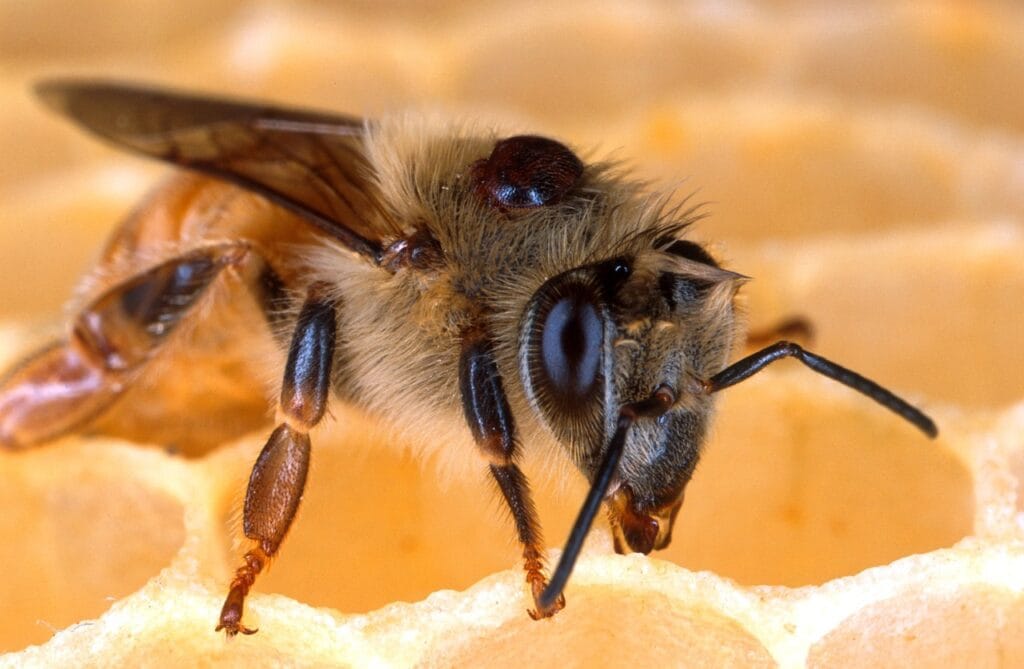Here’s how biological controls, like nematodes, work to reduce SHB populations
Biological controls for Small Hive Beetle (SHB) focus primarily on the use of entomopathogenic nematodes—microscopic roundworms that attack and kill insects in the soil, specifically targeting the beetle’s vulnerable pupal stage.
Here are the main details:
- How nematodes work: SHB larvae leave the hive to pupate in soil. Entomopathogenic nematodes, when applied to this soil, actively seek out and infect these wandering larvae and pupae. Once inside the beetle, nematodes release bacteria that kill the host quickly, then reproduce within it, producing more nematodes to continue the cycle[1][2][3][4][5].
- Most effective nematode species:
- Steinernema carpocapsae: Highly effective, showing near-100% mortality of SHB larvae at appropriate concentrations and maintaining efficacy for several weeks after one soil application[1][5].
- Heterorhabditis floridensis: Also achieves excellent control, similar to S. carpocapsae, with persistent effectiveness in soil[5].
- Application: Nematodes are applied as a soil drench underneath or around hives when mature SHB larvae are expected (often in late spring and summer, during peak beetle activity). They persist in the soil for several weeks, killing newly emerging SHB larvae and thus significantly reducing future generations[3][5][1].
- Suitability & environmental impact: Nematodes are safe for bees, hive products, and the environment—making them an ideal IPM component when compared to chemical insecticides. They do not affect bees because their lifecycle targets only insects that pupate in the soil[2][7].
- Additional biological approaches: Selecting and requeening with honey bee stocks exhibiting strong hygienic behaviors can also help reduce SHB by increasing the removal of beetles and larvae from brood and hive[2].
In Summary
Entomopathogenic nematodes like Steinernema carpocapsae and Heterorhabditis floridensis are the most proven and widely recommended biological controls for reducing SHB populations during their soil stage.
They work best as a non-chemical, environmentally friendly addition to a broader integrated pest management strategy[1][3][5][2][4].
⁂
- https://pmc.ncbi.nlm.nih.gov/articles/PMC8267404/
- https://txbeeinspection.tamu.edu/small-hive-beetle/
- https://bee-health.extension.org/managing-small-hive-beetles/
- https://extension.usu.edu/pests/research/small-hive-beetle.php
- https://pmc.ncbi.nlm.nih.gov/articles/PMC11954647/
- https://www.arbico-organics.com/product/heterorhabditis-indica-small-hive-beetle-control/free-shipping
- https://citeseerx.ist.psu.edu/document?repid=rep1&type=pdf&doi=a3c73add370f9aeccb084fe11237cb90d51eeb30
Ad – Amazon Associate Store









